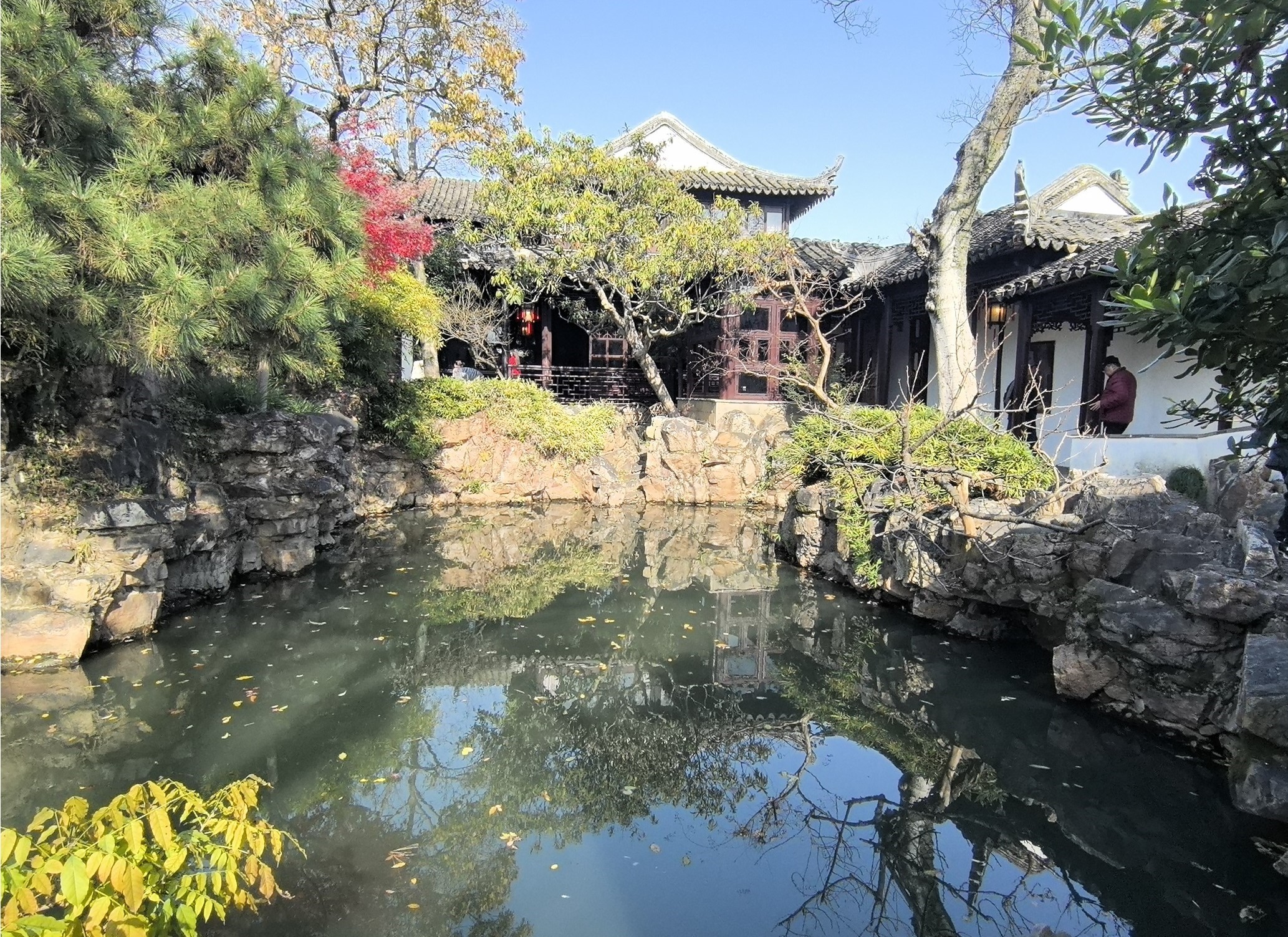Downloads
DOI:
https://doi.org/10.58981/bluepapers.2025.2.15Keywords:
UNESCO World Heritage, Classical Gardens of Suzhou, historic urban water system, symbiotic relationship, resilience valueAbstract
The World Heritage property Classical Gardens of Suzhou (CGS) comprises water-focused cultural landscapes closely integrated with the historic urban water system (HUWS) of the ancient city of Suzhou in China. Historically, the gardens and the water system developed together, influencing and complementing one another in a symbiotic relationship. In response to the combined pressures of climate change and rapid urbanization, the resilience value – that is, the inherent capacity to adapt to and withstand environmental stresses – embedded in this relationship offers critical insights for urban planners, ecologists and cultural heritage agencies working to improve the flood and ecological resilience of gardens and ancient cities. This article surveys relevant scholarship and draws on field visits and interviews. It focuses on the resilience value of the symbiotic relationship that developed between the gardens and the urban water system and reviews key policies and practices since the 1950s. It summarizes efforts that have helped revive the symbiotic relationship and proposes strategies to further promote the recovery of this relationship by drawing on its embedded resilience value to enhance the resilience of both the gardens and the city of Suzhou.
How to Cite
Published
Issue
Section
License
Copyright (c) 2025 Yapeng Ou, Zhen Cai, Qingzhou Wu

This work is licensed under a Creative Commons Attribution 4.0 International License.
References
Chen Zhilan, Li Mengying and Xie Liqun. 2014. “Technology and Effects of Water Restoration and Its Sustainability on Suzhou Traditional Garden”. Environmental Engineering 32, no. 10: 5–8, 112.
China Environment Network. 2023. “Significant Achievements Have Been Made in the Water Environment Improvement of the Pingjiang Historic District in Suzhou, Showcasing a New Look for the Ancient City.” https://res.cenews.com.cn/hjw/news.html?aid=1094214.
Fan Jitian. 2023. “Research on the Problems and Countermeasures of Government Performance in the Protection of Suzhou as a National Historical and Cultural City.” Master’s thesis, Suzhou University.
ICOMOS. 1997. Advisory Body Evaluation. https://whc.unesco.org/en/list/813/documents/.
Jiangsu News. 2024. “Is Jiangsu a Hot Destination Again? This Time it’s a Waterway in Suzhou!” https://baijiahao.baidu.com/s?id=1789416277761013279&wfr=spider&for=pc.
Jiangsu Urban Planning and Design Institute. 2008. Suzhou Urban Water Environment Governance Plan (2007–2020).
Jin Wen. 2024. “Promotion of the Protection and Inheritance of Historical and Cultural Heritage through the ‘Rebirth’ of Waterways in Jiangsu.” Urban and Rural Development, no. 10: 32–35.
Lv Yingjie. 2017. “The Relationship between Suzhou City Water Diversion with the Canglang Pavilion.” Architecture & Culture, 7: 178–9.
Qiu Xiaoxiang. 2009. “Conservation of the Ancient Urban Area in Suzhou.” Journal of Urban and Regional Planning 2, no. 1: 69–82.
Shi Sha, Fan Ziwu and Wu Jingxiu. 2017. “Study on Structure and Evolution of River Network in Suzhou Ancient City.” Yangtze River 48, no. 9: 20–4.
Suzhou Municipal People’s Government. 2018. “Gazette Explanation on the Regulations on the Protection of Suzhou as a National Historical and Cultural City.” https://www.suzhou.gov.cn/szsrmzf/gbdfxfg/202207/0554816e138749278075ef079217abe8.shtml.
Suzhou Natural Resources and Planning Bureau. Suzhou Historical and Cultural City Protection Plan (2013–2030). https://zrzy.jiangsu.gov.cn/sz/ghcgy/201904/t20190402_769074.htm.
Suzhou Water Authority. 2020. “Three Records of Water Management in the Ancient City.” https://water.suzhou.gov.cn/slj/rddd/202001/ac1374dcfdad443a82fa3e8f95f049d7.shtml.
Wang Hui and Ma Jianwu. 2019. “Protection and Renewal of the Landscape Style of the ‘Three Horizontal and Three Vertical’ Main Water System in Suzhou Ancient City.” Contemporary Horticulture, no. 22: 172–4.
Wu Qingzhou. 1991. “The Urban Water System in Ancient China.” Huazhong Architecture, no. 2: 55–61, 42.
Wu Yannan, Wang Yue and Chen Dechao. 2012. “Ecological Countermeasure Road of Suzhou Classic Garden Water.” Environment and Sustainable Development 37, no. 5: 87–91.
Xia Xiaoshu. 2021. “Research on the Spatiotemporal Changes of Suzhou Couple’s Retreat Garden.” Master’s thesis, China Academy of Art.
Xu Zixuan and Ma Jianwu. 2021. “The Inspiration of Rainwater Management in Traditional Suzhou Gardens for Modern Drainage.” Urbanism and Architecture 18, no. 18: 169–71.
Yin Hanchu. 2021. “Research on the Interactive Relationship between Suzhou City System and Public Space in the Qing Dynasty.” Master’s thesis, Beijing Forestry University.
Yu Shengfang. 1986. “Waterway system in Suzhou.” Architectural Journal, no.9: 37–42, 84.
Yu Yue and Liu Zhicheng. 2018. “The Landscape Language of Ancient Suzhou Flood Adaptation.” Huazhong Architecture 36, no. 03: 97–100.
Zhang Jinshuai, Cao Guohua and Su Hong. 2020. “Suzhou Promotes Systematic Repair around the Protection of the Ancient City.” Urban and Rural Development, no. 16: 6–9.
Zheng Gang and Li Zhu. 2009. “Preliminary Study on the Relationship between Suzhou Garden Construction Ideas and Suzhou Urban Water System.” Journal of Liaoning University of Technology (Social Science Edition) 11, no. 3: 64–7.
Zhou Xiaodong and Ruan Yongsan. 1998. “Inheriting and Developing the Water-City Style, Suzhou Water Environment and Its Governance.” Journal of Tongji University (Social Science Edition), no. 4: 27–30.
Zhu Chaoping. 2018. “Discussion about the Characteristics and Relationship of Water Space between Ancient Chinese City and Gardens.” Journal of Anyang Normal University, no. 2: 99–102.
Zhu Jianguo. 2008. “Building a Harmonious Urban Water System and Highlighting the Charm of the ‘Oriental Water City,’ Taking the ‘Suzhou Urban Water Environment Governance Plan’ as an Example.” Urban Development Research, no. S1: 280–3.
Jiangnan Forum. 2018. “The First and Only National Historical and Cultural City Protection Area in China, Gusu District, Suzhou City.” Jiangnan Forum, no. 1: 2.
Zong Baihua. 1981. Mei Xue San Bu [Aesthetic strolls]. Shanghai People’s Publishing House.




